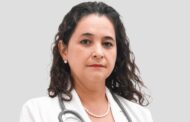There is no universal key to implementing lung cancer screening. The steps to success vary from country to country and population to population. Guidelines in the US, for example, rely on smoking history to evaluate risk and eligibility for low dose CT screening. In Taiwan—where lung cancer is often diagnosed in people who never smoked—includes family history and other risk factors to increase the diagnostic yield.

The one universal element for success is low-dose CT, which has proven effective in diagnosing more lung cancers at earlier stages when the disease is more responsive to treatment. And it is cost-effective as well. So said Claudia Henschke, PhD, MD, Professor of Diagnostic, Molecular and Interventional Radiology at the Icahn School of Medicine at Mount Sinai in New York
“If you can find it early enough, you can save 90% to 95% of people with lung cancer,” Dr. Henschke said. “If we had a drug that could boost survival from 10% to 90% or more, it would be a wonder drug. That’s what low dose CT screening can do for lung cancer.”
Dr. Henschke will co-chair an educational session titled “Implementing Lung Cancer Screening in Your Country: Taking Screening from the Trials to the Public” from 10:45– 11:45 on Tuesday, September 12, in room 406 at the Suntec Singapore Convention & Exhibition Center. She will share the podium with Pan-Chy Yang, MD, PhD, Professor of Internal Medicine at the National Taiwan University College of Medicine, Taipei.

ES34: Implementing Lung Cancer Screening in Your Country: Taking Screening from the Trials to the Public
10:45–11:45 SGT, Tuesday, September 12, Room 406

“Lung cancer is the number one cause of cancer mortality for both men and women,” Dr. Yang said. “And more than two-thirds of our lung cancer patients do not have a history of smoking. If we only used smoking history in our lung cancer screening guidelines, we would miss much of the benefit.”
Turning clinical trials into successful screening programs is a complex process. Different populations have different prevalence patterns and risk factors, which affects screening criteria and priorities.
Different countries have distinct health systems and implementation policies. Screening institutions have their own priorities and needs. So do the different providers who order, perform, and interpret CT scans. Barriers can exist at many levels, and it is important to understand the unique barriers in different settings in order to develop a plan to mitigate the challenges.
“The devil is in the details,” Dr. Henschke said. “To get a whole screening system going takes a lot of coordination. It takes a key person at each institution who really wants to coordinate all the people that are needed to make it work because screening is at the intersection of so many disciplines. You have to have quality assurance for the screening to assure its benefit, and you need to have outreach out to the target population.”
Countries need to identify who is most likely to benefit from screening. Many of the foundational lung cancer screening studies were done in countries where smoking was the primary risk factor. Other populations may have different risk factors.
“Non-smoking lung cancer is worldwide, particularly in East Asia,” Dr. Yang said. “And non-smoking lung cancer is increasing, including in the US and in Europe. We have started looking to find out why.”
Population studies identified specific genetic risk factors for lung cancer, even in patients who never smoked, Dr. Yang said. Passive smoking and chronic lung disease play roles. Environmental exposures, especially air pollution and cooking fumes, increase risk. A family history of lung cancer has emerged as the leading risk factor in people who smoked as well as those who didn’t.
Taiwan launched a national low dose CT screening program focused on two groups; those who smoke, beginning at age 50, and those who don’t with a family history of lung cancer, beginning at age 45. Most of the lung cancers detected the first year (85%) were stage 0 or stage 1.
“Smoking cessation is the most important part of lung cancer prevention,” Dr. Yang said. “In countries that have the resources, start screening with heavy smokers. But if more than one-third of your lung cancer prevalence is in patients who never smoked, consider screening based on family history. Your screening program should take into account your own population epidemiology, genetics, and environmental factors, which can be quite different between countries. You cannot just focus on heavy smokers.”
The emphasis on non-tobacco risk factors is not unique to East Asia. As smoking rates decline in the US and elsewhere, people who never smoked are emerging as a growing population at risk for lung cancer.
“I agree with Dr. Yang that you cannot focus just on heavy smokers,” Dr. Henschke said.




